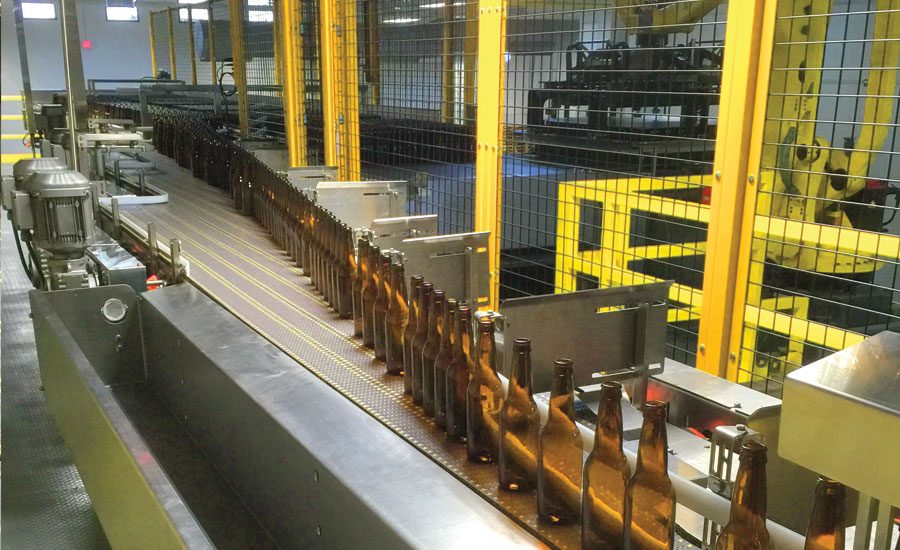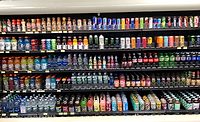In 2014, Gallup released a poll that stated the average american work week now is 47 hours. With fewer non-work hours available, it is understandable why on-the-go, convenience products have become popular with American consumers. However, consumers are not the only ones feeling the pinch. In order to keep up with the evolving consumer packaged goods (CPG) market, manufacturers are depending on high-quality equipment to keep operations running efficiently, experts note.
“We’re seeing a trend in the food and beverage industry for higher quality and more serviceable machines,” says Matt Wicks, vice president of product development and manufacturing systems for Mason, Ohio-based Intelligrated. “End-users are evaluating the total lifecycle costs of the equipment, [and] are focused on higher quality and more serviceable features.”
Matt Job, automation business unit manager for Greenville, S.C.-based Hartness International, also notes the importance of total cost of ownership for CPG manufacturers. He says the company sees a “continual drive for smarter equipment that can provide predictable maintenance versus reactive to help increase machine effectiveness and drive down total cost of ownership.”
To ensure equipment stability, original equipment manufacturers (OEMs) are evaluating industry demands and fine-tuning product lines. For palletizing and depalletizing operations, Intelligrated upgraded its 890i/891i palletizers to be more accommodating to product challenges.
“Our 890/891i conventional machines include maintenance-focused enhancements like semitransparent covers for excellent visibility during operation, easily removable covers and guards for quick access to components that may require adjustment or replacement through the system lifecycle,” Wicks says. “The updated design also prioritizes safety, with an automatic air dump to avoid trapped energy, standard high-voltage arc flash protection, remote power disconnect, interlocked access gates, taller safety fences and a muted light curtain system for pallet discharge.”
But quality and predictable maintenance for equipment are not the only factors that have impacted palletizing and depalletizing operations within the beverage market.
“We continue to see customers with challenging types of packages (such as crates, small/light cases) as well as challenges with managing the changing palletizing-pattern requirements to create stable pallet loads,” Wicks says.
Hartness’ Job adds that SKU proliferation with regards to changeover and growth of smaller casecount package configurations also are impacting palletizing operations in the beverage market.
To accommodate this, Hartness is focusing “on smarter changeover actuation points, increased emphasis on operator input/control to allow for reliable changeover and quicker recovery using smarter operator interfaces [and] continued use of standard robotic technology to provide flexible solutions that can be easily adapted to handle new product configurations,” he says.
FLEXIBILITY FOCUS
Because of these industry trends, experts note that flexibility is a must for palletizing and depalletizing operations. “The beverage market has some of the highest speed demands in the [palletizer/depalletizing] market, [and] with the increase in flexibility required in this market, we have seen a continued growth in utilizing robotics to meet these demands,” Job says.
Intelligrated’s Wicks also notes the value that robotics have on palletizing/depalletizing operations when it comes to flexibility.
“Robotic palletizing systems and hybrid palletizers have the most inherent flexibility of all palletizing systems,” he says. “Software capability should be considered as many solutions require offline programming or files that must be uploaded to equipment for operational updates.”
Some of this need for flexibility stems from the growth of niche beverage markets like ready-to-drink coffee and teas, energy drinks, coconut waters, etc.
“With the ever-changing landscape of bottle and container types that the niche markets are releasing to drive for differentiated shelf presence, both operations need to be flexible to handle future primary and secondary packages with little to no additional expense,” Hartness’ Job adds.
But no matter what a company’s portfolio features, he says beverage-makers should ask themselves “how adaptable will the equipment be to meet the new consumer demands for product variations and case counts?”
Operations managers also need to consider whether the equipment has the flexibility to handle various primary and secondary packages, Job notes. They also should ask, “Can new products be added without the need for OEM support?” he says.
Experts note that many other variables should be evaluated when investing in palletizing and depalletizing equipment.
“Cost is always a consideration, but many end-users have felt the pain of using a lower-cost, lower-quality machine and ending up with a loss of confidence in the automation and/or not seeing [a] planned return on investment,” Intelligrated’s Wicks says. BI





